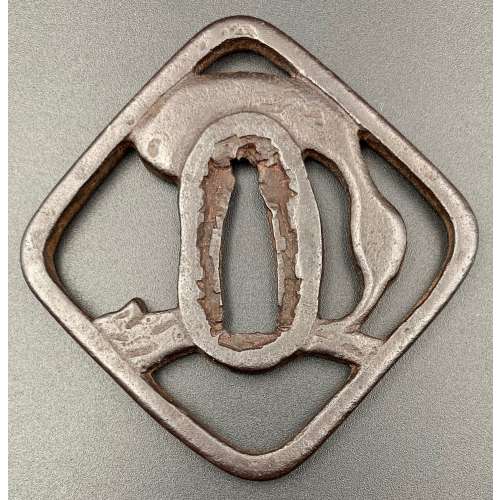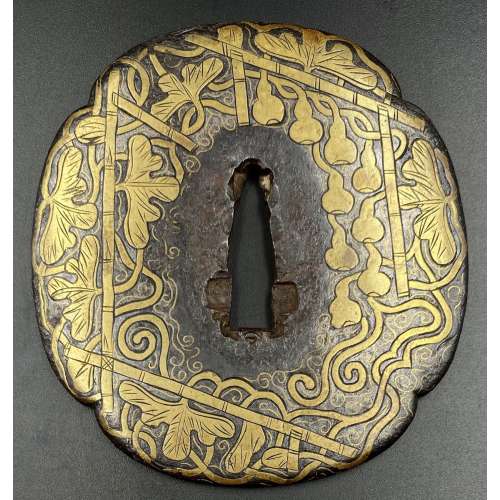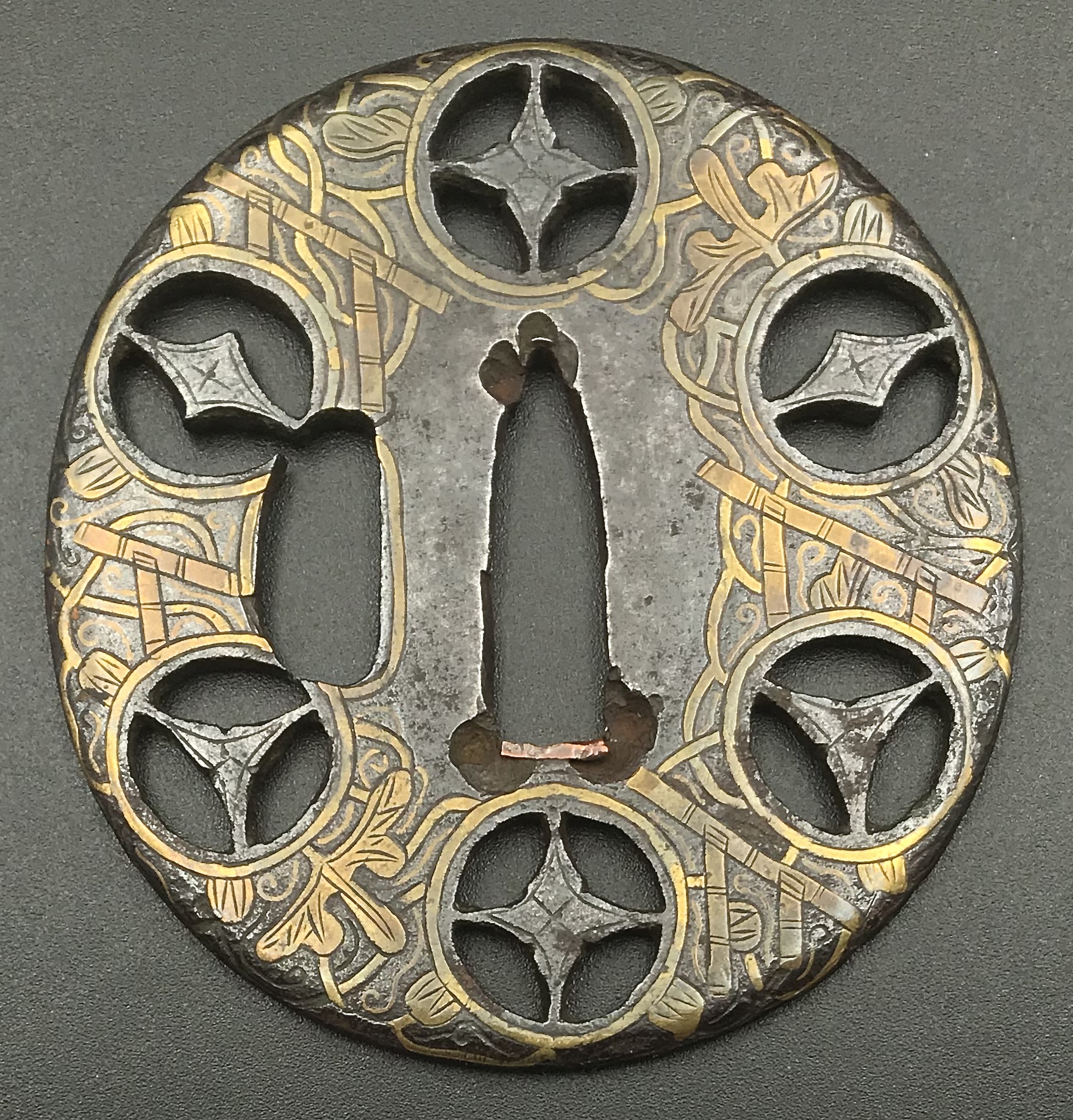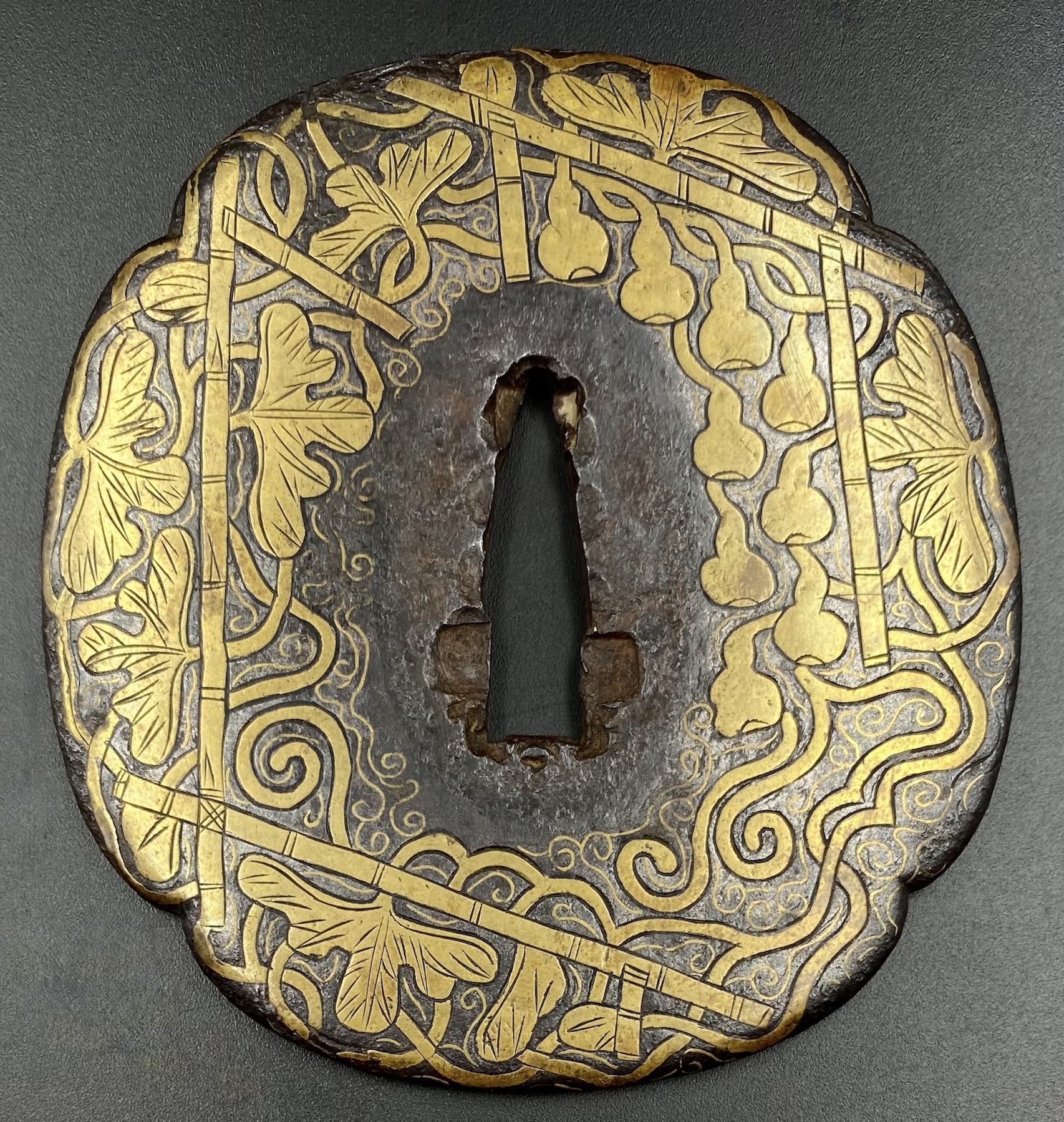Iron tsuba of diamond form with rounded corners with the design of a double gourd on a branch in openwork. Dark brown patina. Ko-Shōami school. Custom kiri-wood box with hakogaki of Sasano Masayuki.
Momoyama Period (1574-1603)
Size: 77.1 x 75.7 x 4.6 mm; weight: 75.3 g.
Provenance: Sasano Masayuki
Hakogaki lid outside:
古正阿弥鐔
Ko-Shōami tsuba
Hakogaki lid inside:
Hyōtan-sukashi
Mumei, Momoyama-ki saku
Tetsu, ji-sukashi
Koboku-aware no kasaku
Heisei ninen Soshinkan
Minazuki
Openwork design of gourd
Unsigned, Momoyama era work
Iron, large openwork
Masterwork full of classical charm.
June of 1990, Soshinkan [pen name of Sasano Masayuki]
瓢簞透 無銘 桃山期作 鉄地透
古撲惻之佳作 平成二年 素心鑑 水無月






